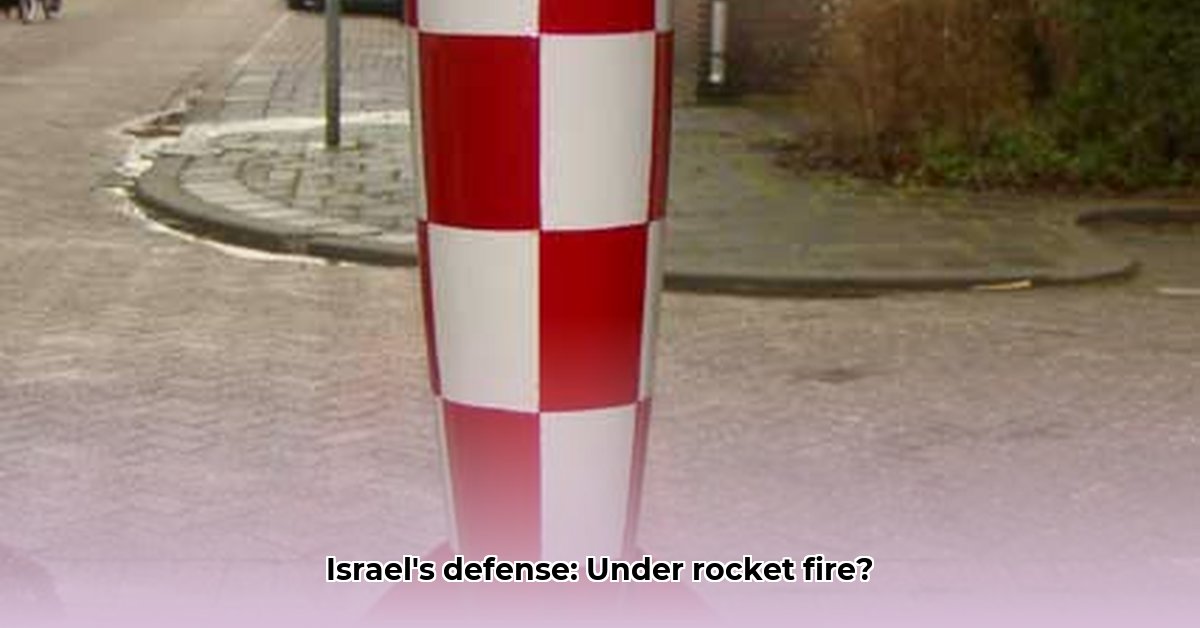
A Nation's Shield Under Siege: Assessing Israel's Air Defence Capabilities
Israel's multi-layered air defence system, often lauded as a technological marvel, is facing unprecedented challenges. Recent rocket barrages have exposed vulnerabilities, prompting crucial questions about its long-term effectiveness and sustainability. This informational piece examines the strengths and weaknesses of this complex system, considering its response to evolving threats and exploring potential solutions for the future. How effectively does Israel's defence system really work, and what are the costs involved in maintaining this crucial national security asset?
The Three-Tiered Defence: Strengths and Limitations
Israel's defence strategy employs a layered approach, incorporating the Iron Dome, David's Sling, and Arrow systems. This tiered system addresses various threats, from short-range rockets to more complex ballistic missiles. Iron Dome, renowned for its effectiveness against smaller rockets, operates like a sophisticated net, successfully intercepting a significant percentage of incoming projectiles. However, under conditions of saturation attacks – a barrage of hundreds or even thousands of missiles – the system's capacity shows signs of strain. This recent experience has given a pragmatic viewpoint on the effectiveness of even the most well-funded and technologically advanced systems. Imagine a single firefighter trying to tackle a massive wildfire-- the sheer scale of the disaster limits even the most capable hero.
The recent attacks showcased this limitation. While still highly effective, the sheer volume of missiles launched overwhelmed the system at times, leading to successful breaches. Furthermore, the financial implications are staggering. Interception costs vast sums of money per missile, resulting in hundreds of millions, perhaps even billions, of rands spent during the recent attacks. This raises significant questions about the long-term financial sustainability of such a defence posture, especially in the face of potentially more frequent and intense attacks going forward.
Adapting to Hypersonic Missiles: A Future Without Guarantees
The emergence of hypersonic missiles presents an even more formidable challenge. These weapons possess incredible speed and maneuverability and are far harder to intercept. Their emergence poses a significant risk to even the most advanced air defence systems. In essence, it's akin to trying to stop a speeding bullet with another bullet—a technically challenging feat that often presents a low probability of success and an extremely high chance of failure. A highly effective early warning system is therefore crucial. Israel relies heavily on intelligence cooperation with the US, a relationship that plays a significant role in its ability to defend itself. However, the dependence on such cooperation introduces a degree of geopolitical risk. What happens if this partnership alters or ends? This vulnerability needs to be addressed.
Investing in the Future: A Multi-pronged Approach to Enhanced Defence
To strengthen its defenses against the escalating threat landscape, Israel must adopt a multi-pronged approach. This involves several key actions:
Investing in Advanced Interceptor Technologies: The development and deployment of new interceptor missiles capable of intercepting hypersonic weapons are absolutely crucial. This requires substantial investment in research and development, focusing on technologies that can match or exceed the speed and maneuverability of these advanced threats.
Strengthening Early Warning Systems: Enhancing the nation’s ability to detect and track incoming missiles at greater distances and with greater precision is paramount. This necessitates upgrading radar systems and investing in advanced sensor technologies.
Implementing Decentralized Command Structures: Shifting from a centralized command structure to a more decentralized one will enhance resilience against attacks specifically designed to target the system's control points. Such a shift will provide a more robust yet flexible response to missile attacks, adapting to the rapid and chaotic nature of contemporary warfare.
Embracing Technological Innovation: Exploring and integrating new technologies, such as directed energy weapons (laser-based systems) and AI-driven threat assessment tools, are important in creating an adaptive defence system that can evolve to meet emerging threats.
Collaboration and Commitment: A Global Responsibility
The challenges facing Israel's air defence are not solely its own. The global community has a stake in this issue. This calls for strong international collaboration, including enhancing technology sharing and diplomatic efforts to curb the proliferation of advanced weaponry. The effectiveness of Israel's defence system is not merely a national issue, but a matter with global implications owing to the growing nature of ballistic missiles. A stable and secure Middle East benefits everyone.
Key Risks and Mitigation Strategies
The following table outlines key risks to Israel's air defence system, their likelihood, the potential impact, and suggested mitigation strategies:
| Risk Factor | Likelihood | Impact | Mitigation Strategies |
|---|---|---|---|
| Overwhelming Attacks | High | High | Enhanced early warning, improved interceptor capacity, AI-driven target prioritization |
| Hypersonic Missile Penetration | Medium | High | Investment in hypersonic missile defence technologies |
| Supply Chain Vulnerabilities | Medium | Medium | Diversification of suppliers, domestic production capacity building |
| High Defence Costs | High | Medium | International collaboration, streamlining procurement processes |
| Loss of US Support | Low | High | Diversification of international partnerships, strengthening domestic capabilities |
The future of Israel's air defence rests on its ability to proactively adapt, innovate, and collaborate with its allies. It's a continuous process requiring significant investment, technological advancements, and a deep understanding of the ever-evolving threats. The stakes are high, requiring proactive solutions, resource allocation, and global engagement.